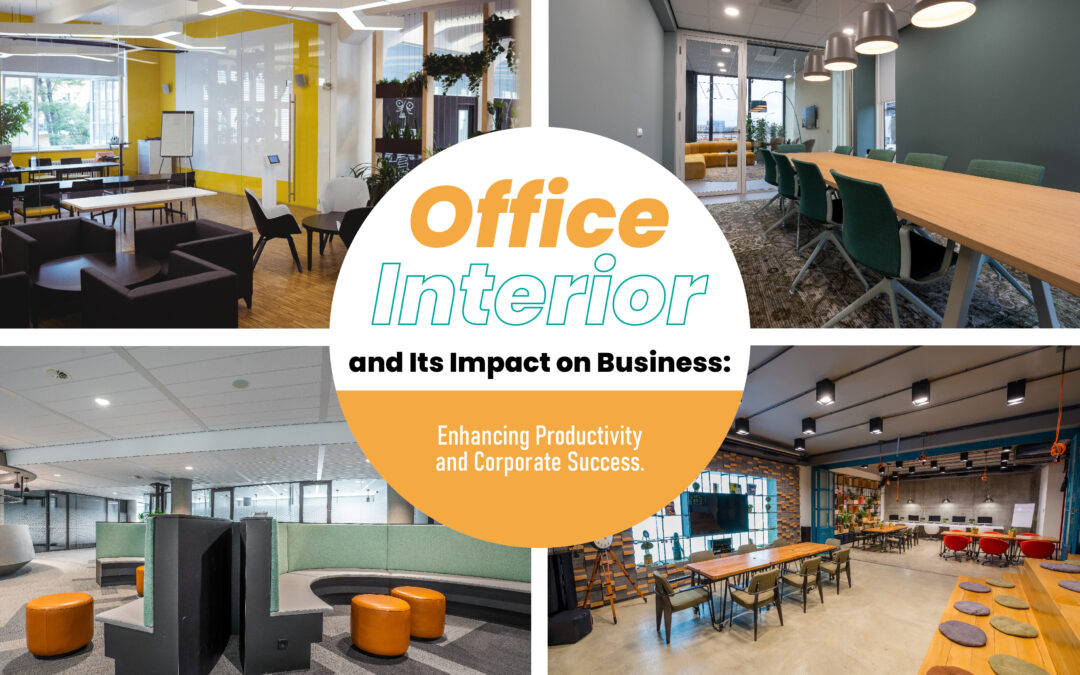In the bustling world of business, success is often attributed to visionary leadership, innovative strategies, and cutting-edge technology. However, there’s a silent influencer that plays a crucial role in shaping corporate triumph – the office interior. Imagine a workspace that feels like a second home, where creativity flows effortlessly, and productivity is at its peak. This is not merely a utopian dream but a tangible reality backed by compelling statistics and data.
The Impact of Workspace Design on Productivity:
The arrangement and architectural design of an office environment hold substantial sway over the productivity levels of employees. It’s not just about arranging desks and chairs; it’s about creating an environment that stimulates creativity and fosters collaboration. According to a study conducted by the University of Exeter, employees working in well-designed office environments with ample natural light and ergonomic furniture reported a 15% increase in productivity. This underscores the importance of thoughtful workspace design in achieving optimal performance.
The open office concept, which gained popularity in recent years, emphasizes collaboration and flexibility. However, according to a Harvard study, open offices can lead to a 73% decrease in face-to-face interaction. This finding underscores the importance of striking a balance in office design to foster both collaboration and individual productivity. Smartly designed collaborative spaces, combined with dedicated quiet areas, ensure that employees have the freedom to choose the environment that best suits their work style, ultimately enhancing productivity.
Source from: University of Exeter – “The Effects of Office Design on Business Performance”
Color Psychology in Office Spaces:
The psychology of color is a powerful tool in shaping the atmosphere of a workspace. Colors can evoke various emotions and significantly impact cognitive functions. In the context of office interiors, color psychology plays a pivotal role in influencing employee mood and behavior. For instance, the color blue enhances focus and productivity, while green fosters a sense of calmness and balance. Corporations can leverage this knowledge to strategically choose colors that align with their organizational goals and create an environment conducive to work.
The selection of colors extends beyond mere aesthetics; it delves into the psychological well-being of employees. A study published in the Journal of Environmental Psychology explored the impact of color on perceived productivity and worker satisfaction in office environments. The findings revealed that employees surrounded by certain colors reported higher levels of satisfaction and perceived productivity, emphasizing the need for a thoughtful approach to color selection in office interiors.
Source: Journal of Environmental Psychology – “Impact of Color on Perceived Productivity and Worker Satisfaction in Office Environments”
The Role of Natural Elements:
In recent years, the concept of biophilic design has gained traction in office interiors. Characterized by the seamless integration of natural elements, including plants, natural light, and water features into the workplace, biophilic design is premised on the belief that fostering a connection with nature is conducive to employee well-being. Consequently, this holistic approach is seen as instrumental in boosting productivity.
A study conducted by Human Spaces investigated the global impact of biophilic design in the workplace. The results were compelling, showing a 15% increase in creativity and a 6% increase in productivity for employees working in environments with natural elements. Notably, greenery was discovered to have a positive impact on cognitive function, offering a refreshing contrast to the sterile atmosphere often associated with traditional office spaces.
Biophilic design goes beyond aesthetics; it represents a paradigm shift in the way we perceive and design workspaces. By integrating nature into office interiors, organizations can create a more engaging and invigorating environment, ultimately contributing to the well-being and productivity of their workforce
Source: Human Spaces – “The Global Impact of Biophilic Design in the Workplace”
Ergonomics and Employee Health:
A healthy workforce is a productive workforce, and office interior design plays a crucial role in supporting employee well-being. By investing in ergonomic furniture and design, companies can effectively reduce the risk of musculoskeletal disorders and, in turn, enhance overall comfort for employees. Research by the International Journal of Industrial Ergonomics suggests that companies with ergonomic workplaces witness a 32% increase in employee satisfaction and a 22% increase in productivity.
Ergonomics is not just about having comfortable chairs and desks; it involves designing workspaces that promote good posture, reduce eye strain, and minimize physical stress. Employees spend a significant time at desks; investing in ergonomic environments directly affects health and overall company productivity. Ergonomic workspaces are a strategic investment, influencing employee health and, consequently, enhancing overall company productivity. Adjustable desks, supportive chairs, and proper lighting are essential components of an ergonomic workspace.
Source from: International Journal of Industrial Ergonomics – “Ergonomic Interventions in the Workplace: A Comprehensive Review”
Collaboration Spaces and Innovation:
In the era of teamwork and innovation, creating collaborative spaces within the office is essential. According to a report by Steelcase, 77% of employees believe that collaborative spaces are vital for fostering creativity and innovation. The design of meeting rooms, informal gathering spots, and open work areas can encourage spontaneous interactions and idea exchange, leading to breakthrough innovations.
Employees engage in collaboration beyond scheduled boardroom meetings; instead, they organically interact daily in the workplace spaces. Design office layouts with mindful foot traffic flow, strategic common area placement, and accessible meeting spaces for collaboration. Create spaces encouraging impromptu discussions and idea exchange, fostering a dynamic and innovative workplace environment.
Source: Steelcase – “Creativity and Collaboration in the Modern Workplace”
Conclusion:
In the dynamic landscape of business, where every advantage counts, the impact of office interior design on productivity and corporate success cannot be overstated. From enhancing employee well-being to fostering innovation, a thoughtfully designed workspace is an investment that pays off in terms of efficiency, job satisfaction, and ultimately, business triumph. As leaders strive for excellence, the silent architect of success – the office interior – stands as a testament to the power of holistic workplace design.













